More information has come to light that suggests exactly that, and, at the very least, strengthens the idea that a 'missile' strike of some kind caused the explosion.
We now have four different video angles of the fire at the fertilizer plant.
In the first three videos, we can see the explosion that happened afterwards. In the last video, we can't see the explosion, but it gives us another vantage point of the site in flames:
Video from viewpoint #1:
Video from viewpoint #2:
Video from viewpoint #3:
Video from viewpoint #4:
In addition, we have a clearer still image of the fire, from about the same viewpoint of where the last video was recorded (#4) marked with the viewpoint 5 on the map:
And this picture of the fire was shot from viewpoint 6 on the map:
From the above videos and pictures we can conclude that the fire was burning like it is shown on the map:
The yellow circle is where the fire was burning prior to the explosion, and the red cloud and arrow points to the approximate direction the fire was burning. The black cloud and arrow points to the approximate direction in which the much bigger black smoke cloud was blowing higher up in the sky.
We will now look further at video #3 and establish from there where exactly that fiery object was coming from and could be seen for the first time, prior to the explosion. To get a better idea of what we can actually see in that video, let's first watch this interesting video analysis of it:
In addition to the features pointed out by the narrator, is that a smoky trail we see in the sky at 9'29 and 9'38 as the camera shakes violently from the blastwave?
Several fixed reference points seen in that video help us further establish where exactly that 'flaming object' was first seen, before the explosion, which we can plot on a map:
The 'flaming object' was coming in from well outside of the plant and had no apparent connection to the initial fire, before it impacted the burning plant and caused the explosion. Take a look at the yellow rectangle; that's the point where we first see the 'flaming object'. Further to the left (indicated by the black rectangle) is where we can see the glow or smoke cloud that was caused by the object.
At 8'28 in the above video analysis you can see the bright glowing spot pointed out by the narrator, which I have indicated with a black rectangle on the map. The white arrow indicates the approximate direction that the 'flaming object' was coming from until it impacted the plant.
Especially in the super-slow motion of video #2, shown in the next video, you can clearly see that there is no connection between the 'flaming object' and anything on or connected to the plant itself, prior to the explosion. Here is that particular snapshot:
Now let's look at a super-slow motion composite of all three videos of the explosion (from viewpoints #1, 2 and 3 in the above map, in that order):
Notice in particular the first video's perspective (viewpoint #1 on the map), where the bright, fiery light source is coming in, before the explosion itself happens. This flaming object seems to be even brighter than the explosion itself, which happens afterwards. Notice that the perspective from viewpoint #1 (point #1 on the first map) is quite different from the next two videos. In this perspective, the flaming object approaches almost directly towards the camera, which is probably the reason why the lens is dazzled by the light much earlier than in the following two perspectives (points #2 and 3 on the map). The flaming object is coming in from the left of the cameras' view in videos #2 and 3, so their lenses are dazzled later than in the first perspective, once the flaming object itself is already in the camera frame.
Whatever is coming in, it is so bright that you can almost suggest it is "as bright as the sun" or brighter!
Notice in particular the first perspective, in the super-slow motion video above (point #1 on the map) and how long it takes before the explosion itself occurs, all the while that flaming object dazzles the lens of the camera and the area with intense light, even before the object itself is captured by the lens!
As it happens, the point where the fire was initially burning (marked by the yellow circle in the first and second map above) is also exactly the point where they now say that the initial explosion occurred, where the "fertilizer plant" building in the above picture once stood.
We can also see and hear it in the next video from CNN. The reporter says that there is actually a crater at the scene:
"This is the blast sight here. You can see the crater, which is 93 feet wide, 10 feet deep. And that was part of one of the buildings that was on the ground here."
I'm not totally sure, but it seems that that crater is also located exactly within the yellow circle on the first and second map above, where they say the initial explosion occurred. I haven't found an overhead picture or data from official sources yet, which shows where exactly this crater is located. But from the pictures and videos that mention that crater, I conclude (as of now) that the crater is located exactly at that yellow circle.
Here you can read more about the crater itself:
So it seems we have a crater exactly at the point where the fire was burning initially and where they also say the initial explosion occurred.Fire officials said Wednesday that some of the volunteer firefighters and first responders who died fighting a fertilizer plant fire were found within yards of a 90-foot crater created by an explosion that killed 15 and crippled this small farming community.
[...]
The fire triggered an explosion that blasted through the 3-foot concrete foundation of the building where it occurred, then dug 10 feet deeper into the ground to form the crater.
[...]
The only intact part of the structure where the blast occurred is the portion of the foundation that was not taken out by the crater. The remaining foundation was covered in blasted chunks of concrete Wednesday. Some pieces were as small as basketballs. Others were as big as couches.
Those pieces of debris did not appear as visibly charred or burned as the debris at the second structure that was destroyed.
Officials said four nearby tanks containing anhydrous ammonia were largely intact Wednesday. Those have also been ruled out as a cause of the blast.
State environmental regulators deemed the anhydrous ammonia a low risk to the nearby houses, apartments and schools six years ago.
Investigators, chemists, electrical engineers and fire experts from several state and federal agencies are involved in the inquiry.
Neon tape marked the circumference of the crater at different depths Wednesday. Part of the investigation is creating a three-dimensional map of the crater. Nearby, a corn silo stood warped and partially leaning. Its side was split open vertically and a massive pile of corn had spilled out.
The following eyewitness reports that they lost all communications, including radio communications, because the power went out. But police and EMS radios almost always operate on battery power.
I'm wondering if some kind of electrical EMP from that object (meteorite?) followed by the explosion caused this?
Is it normal for an ordinary fertilizer explosion to cut off the power supply? Even radio communications?
It seems that this very bright flaming object - most likely a flaming meteorite from a comet fragment - was coming in, directly through the smoke cloud of the initial fire, and apparently crashed either just short of or directly into the burning building and caused the crater.
What a truly strange event. But then, stranger things have happened...
'Alien' meteorites hit Bosnian man's house six times
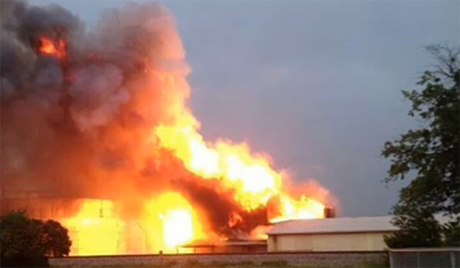

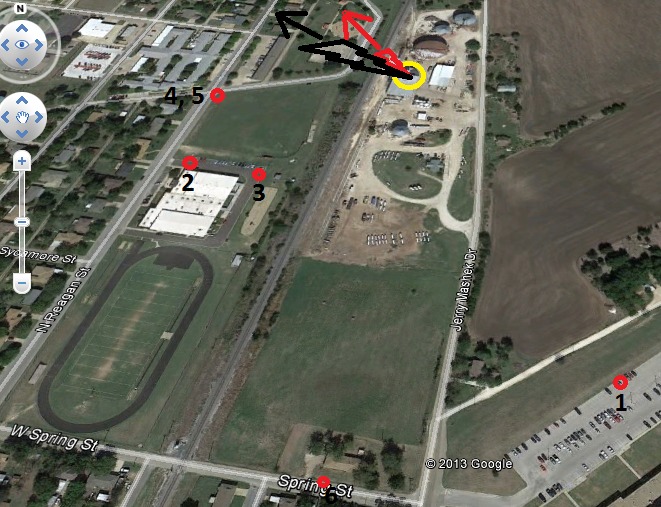
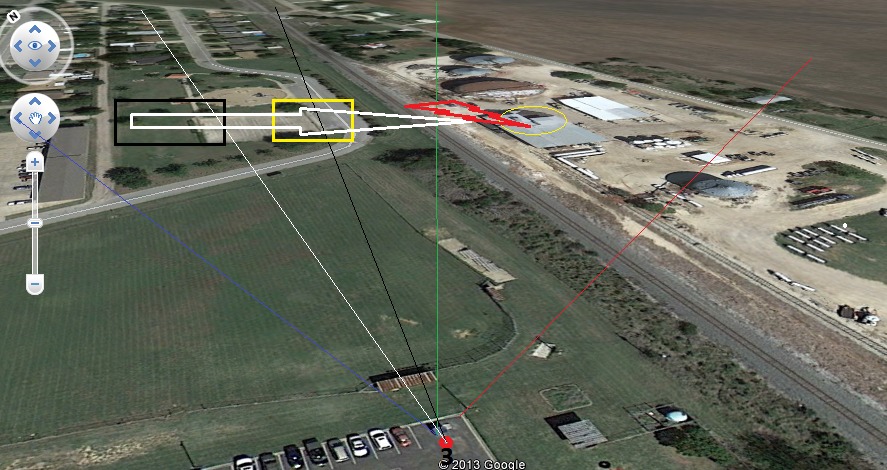
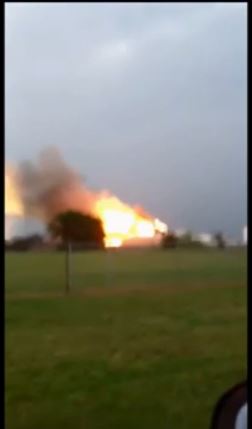
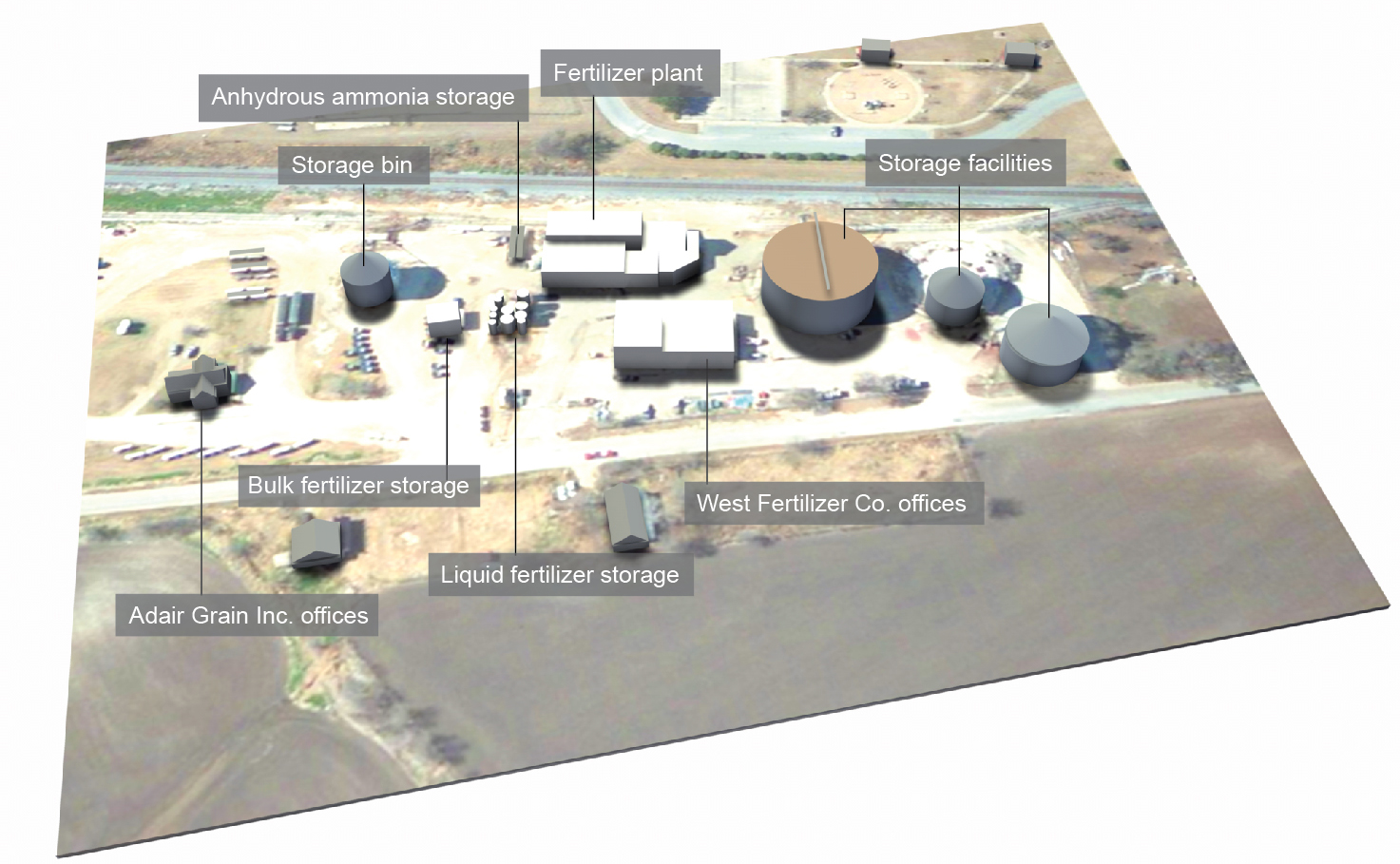



I was told by a woman who lives there that her lawyer has a recorded dispatch from the Railroad company telling the conductor of the train to proceed to the plant even though there was a fire burning there and he was hauling rail cars filled with liquid anhydrous amonia. She believes that something from the original fire ignited a rail car and that is the object seen flying through the air like a missle in the videos.
Here is a link to a photo showing the remaining railcars.
[Link]